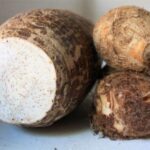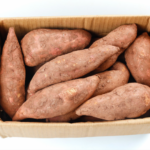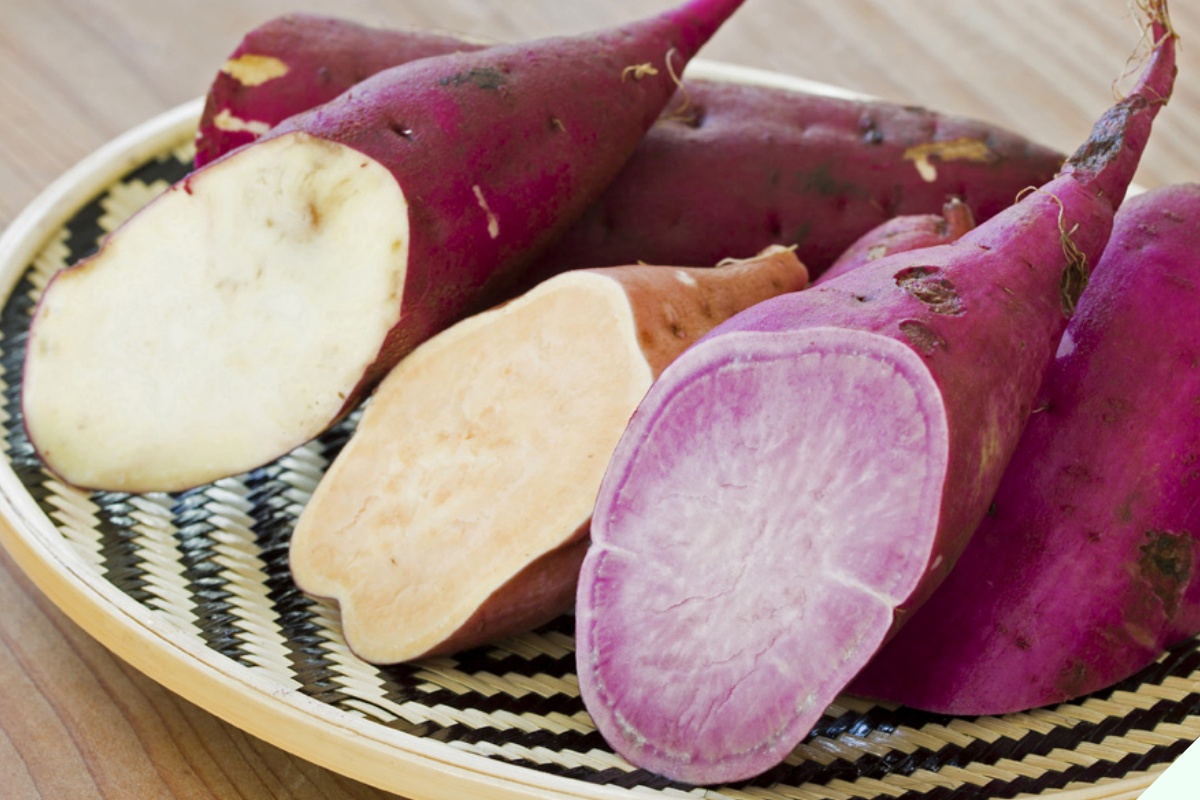
Which Sweet Potato Variety Should You Choose: Yellow, White, Orange, or Purple Flesh?
There are four main types of sweet potatoes available in the market: white, orange, purple, and light yellow-fleshed. Among them, purple and orange sweet potatoes are the most common and familiar to consumers.
While all varieties provide essential nutrients and fiber, each type of sweet potato offers unique health benefits.
1. White-Fleshed Sweet Potato – The “King” of Starch
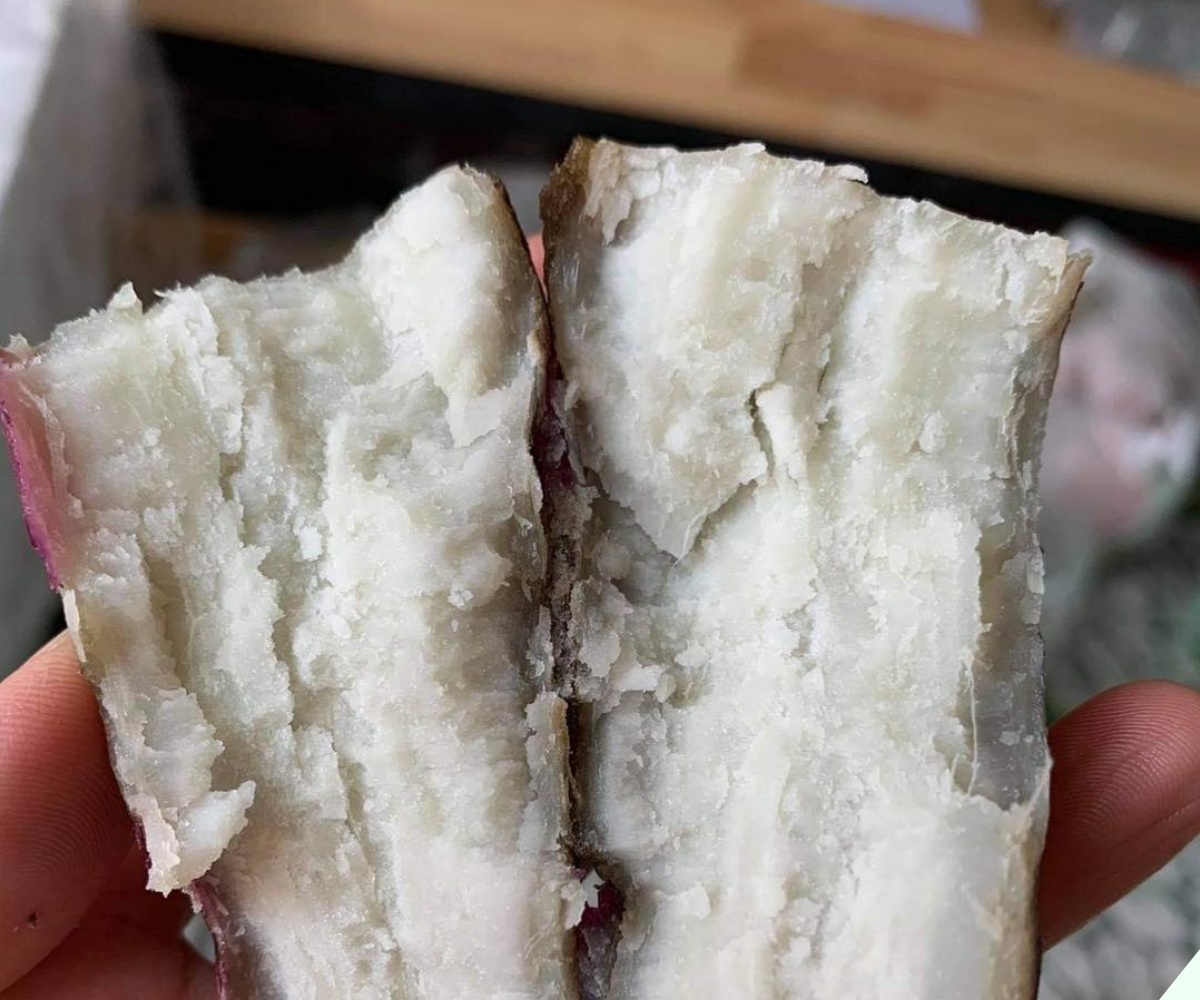
This variety has a dense texture, giving a chestnut-like sensation when eaten, with very little moisture. It sometimes feels slightly dry, creating a prolonged feeling of fullness.
The reason lies in its high starch content. It is calculated that eating one sweet potato is equivalent to eating ¾ of a bowl of rice. Therefore, this type of sweet potato can be a substitute for rice and aids in weight loss.
For the same reason, this white-fleshed sweet potato is often used to make vermicelli and starch. Few people choose to bake it as it tends to be very dry.
2. Yellow-Fleshed Sweet Potato – The “Queen” of Carotene
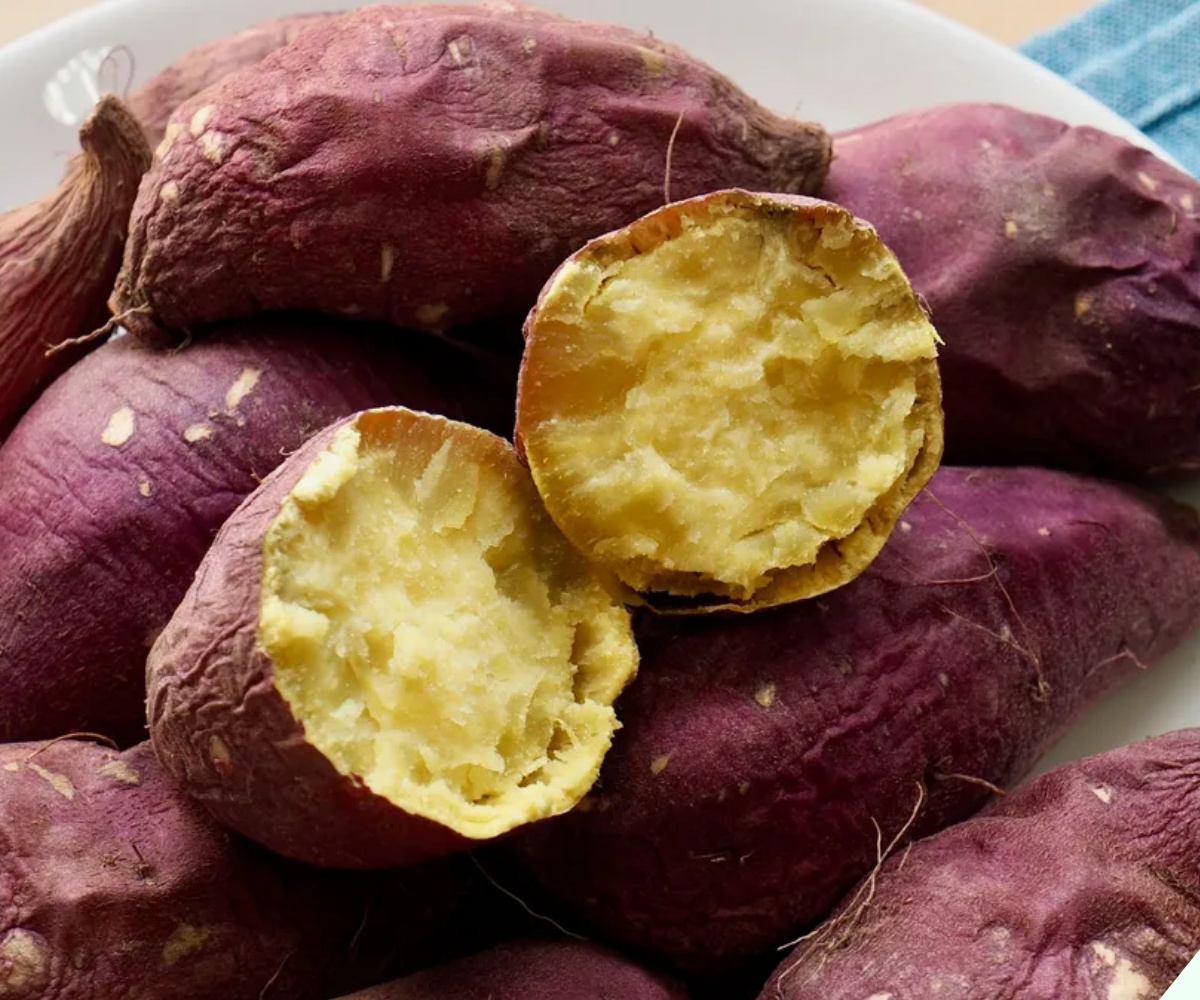
Besides the difference in color, compared to the white-fleshed variety, the yellow-fleshed sweet potato has a lower starch content but a higher sugar and water content.
Consequently, it is often used to prepare various dishes, including baked sweet potatoes. After baking, this type of sweet potato becomes very soft, fragrant, and sweet.
Additionally, yellow-fleshed sweet potatoes are rich in carotene. The deeper the yellow color, the higher the carotene content. The skin of this variety usually has a light purple hue.
3. Orange-Fleshed Sweet Potato

This variety has a darker orange flesh. It also contains more sugar and water than the white and yellow-fleshed types.
The nutritional value is similar to that of yellow-fleshed sweet potatoes. It is commonly used for steaming, baking, or making cakes.
4. Purple-Fleshed Sweet Potato – Rich in Anthocyanin
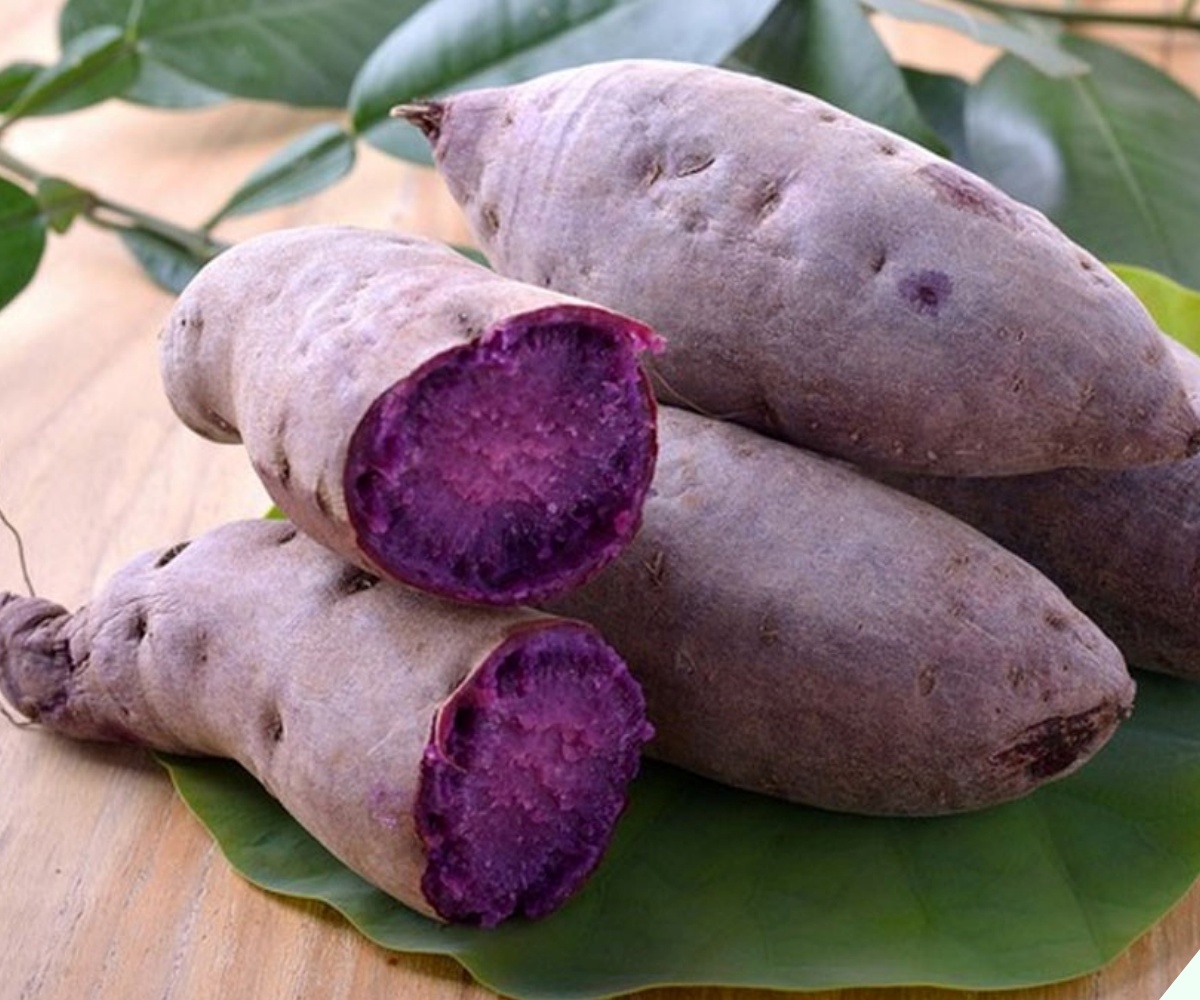
Purple-fleshed sweet potatoes are abundant in anthocyanin, a powerful antioxidant. Regular consumption of this variety can slow down the aging process. Purple sweet potatoes have a uniquely delicious flavor. They are excellent for baking or cooking various dishes.
In general, sweet potatoes, regardless of variety, are a rich source of nutrients, especially fiber. They promote digestion and are suitable for all ages.
Depending on your intended use, you can choose the most suitable type of sweet potato. If you prefer baked sweet potatoes, go for the yellow or orange-fleshed varieties. For baking cakes, purple sweet potatoes are ideal. And if you’re looking to lose weight and replace rice, the white-fleshed variety is a great option.
Tips for Choosing Delicious Sweet Potatoes
In addition to selecting the type of sweet potato, keep the following factors in mind when making your purchase:
Shape of the Sweet Potato
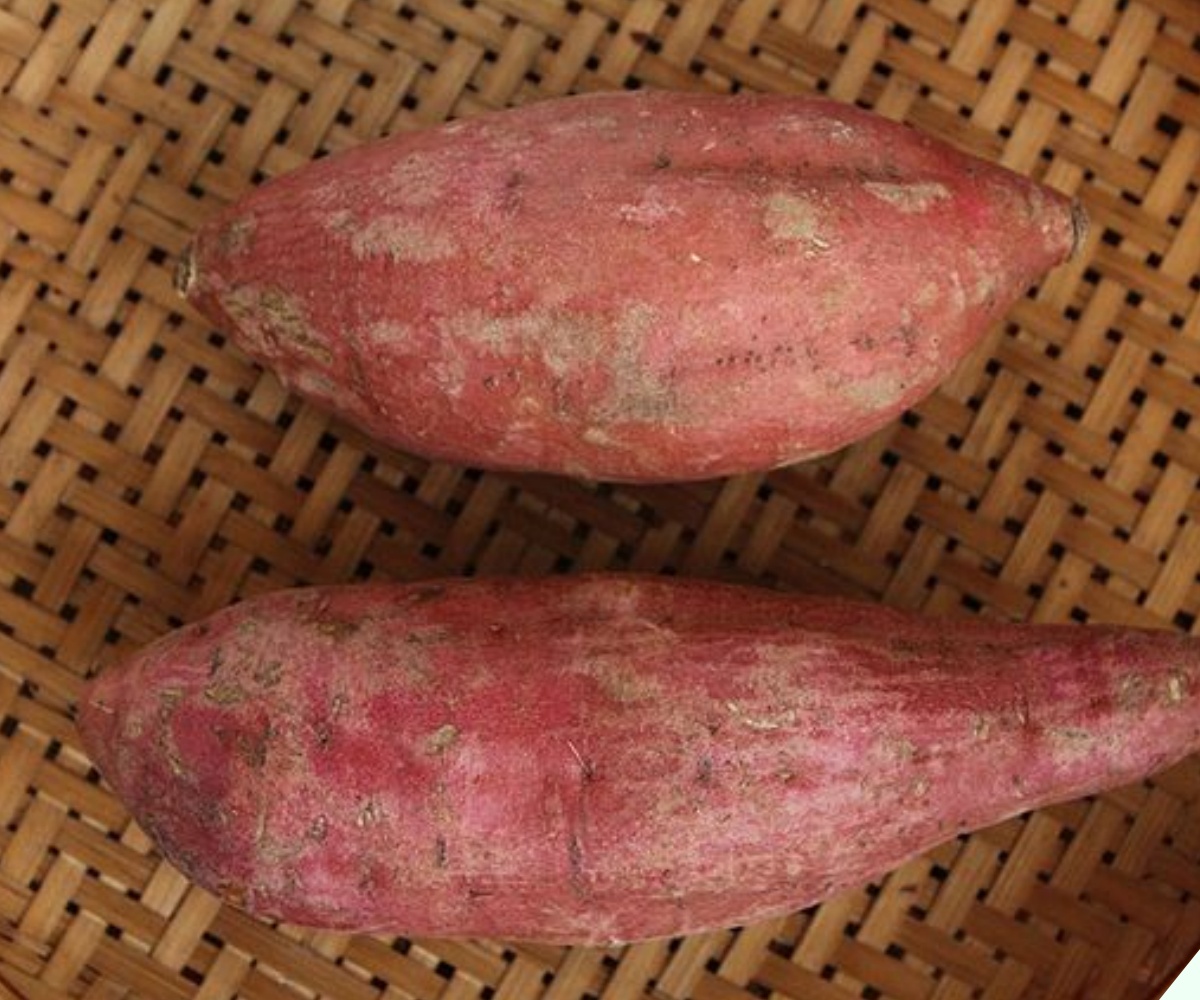
Opt for smaller, tapered sweet potatoes. These tend to be more nutritious and flavorful.
Avoid overly large sweet potatoes, as they may be challenging to cook thoroughly and tend to be less tasty. If you come across sweet potatoes with unusual shapes, it’s best to avoid them. Most likely, they suffer from nutritional deficiencies, pest damage, or are grown in areas with many rocks.
Inspect the Skin

When buying sweet potatoes, choose those with smooth, undamaged surfaces and bright colors. The smoother the skin, the higher the starch content, and the tastier the sweet potato.
If the skin is pitted, discolored, or has dark spots, it indicates that the sweet potato is past its prime and is no longer fresh.
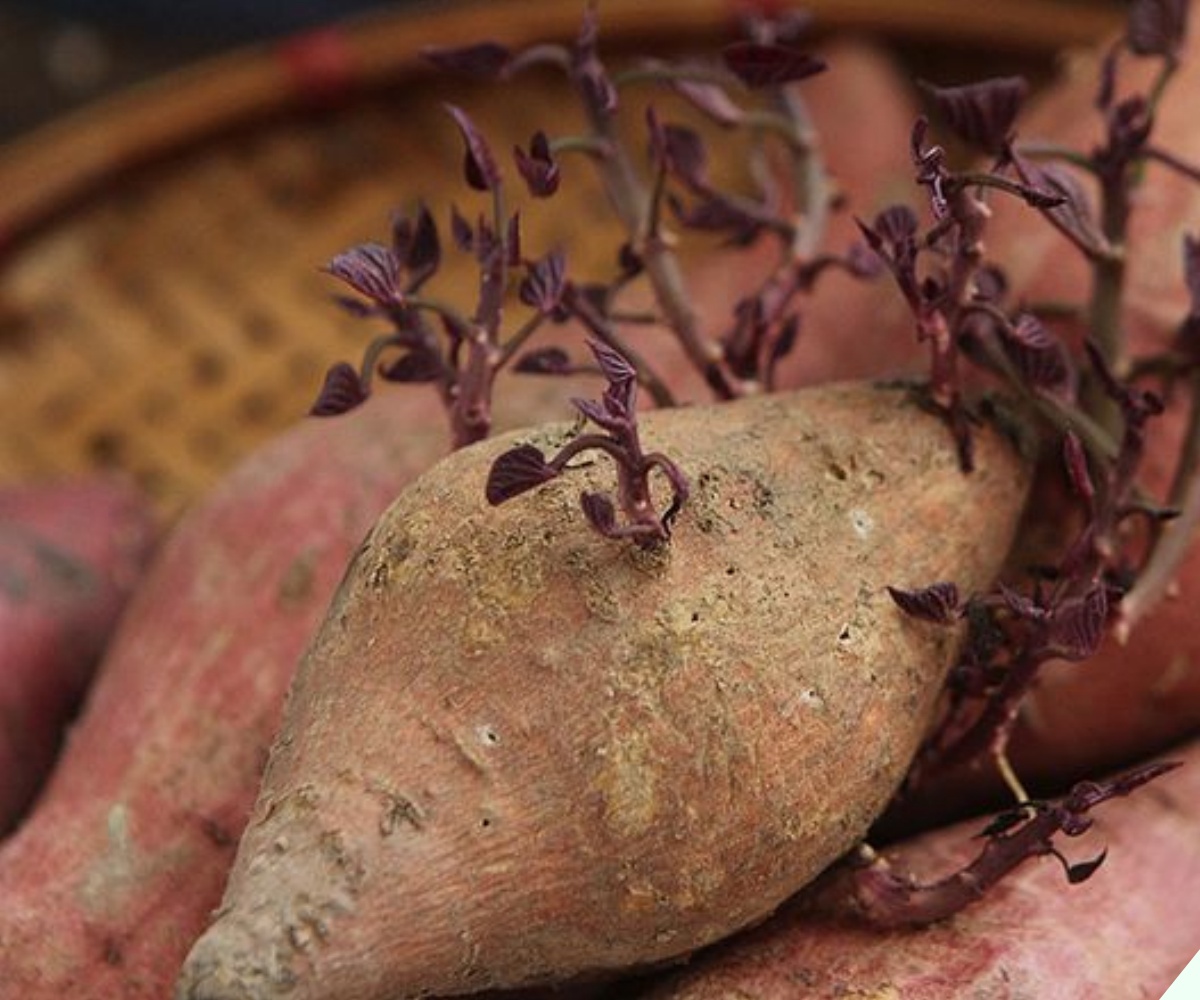
If the sweet potato has sprouted, it’s best to avoid it, as its nutritional value has likely diminished, and the taste may not be as pleasant.
Smell
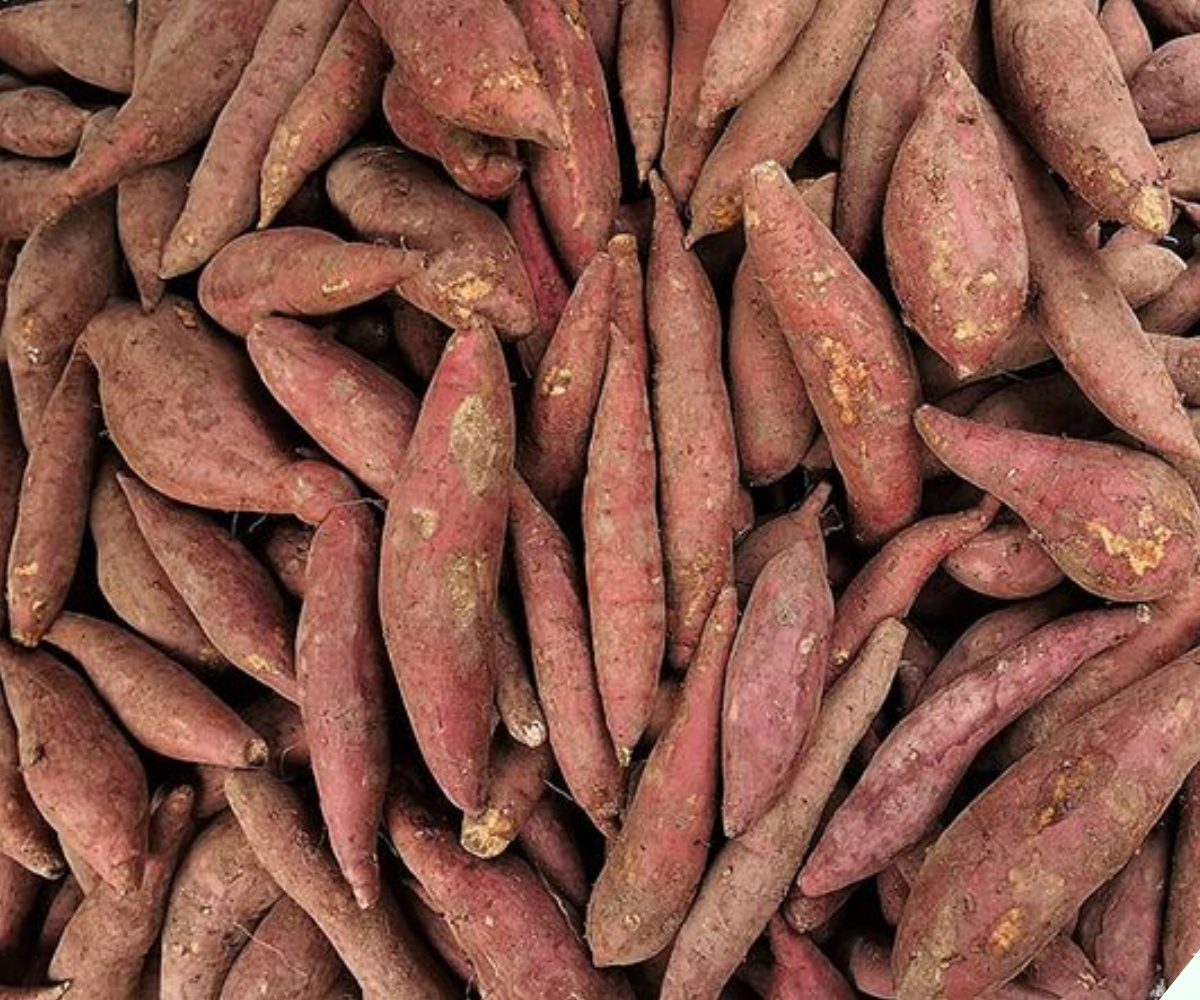
One of the secrets to choosing a good sweet potato is its aroma. Fresh sweet potatoes should have a subtle, pleasant fragrance. If you detect a strong or putrid odor, the sweet potato has likely gone bad.
Feel

Squeeze the sweet potato gently. If it feels firm, it’s fresh. On the other hand, if it feels slightly soft or wilted, it’s best to avoid it. You can also gently peel a small portion of the skin; fresh sweet potatoes will have a white sap-like substance underneath.
Tips for Perfectly Soft and Delicious Boiled Sweet Potatoes
Boiling is one of the most common methods of cooking sweet potatoes. Here are a few tips to ensure your boiled sweet potatoes turn out soft, tasty, and retain their natural sweetness:
– Avoid over-steaming the sweet potatoes, as they can become too soft and lose their shape. Typically, they are ready after about 15 minutes of boiling.
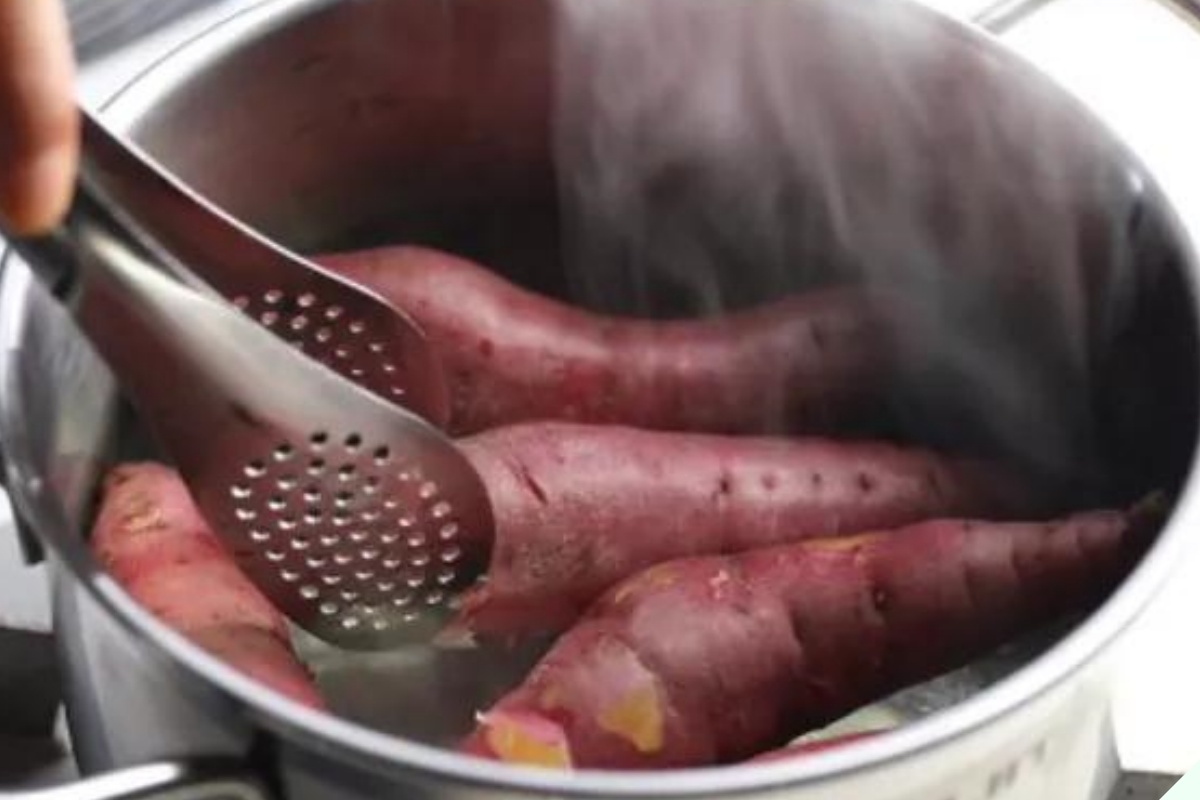
– To check if the sweet potatoes are done, insert a pair of chopsticks or a fork into the center. If they slide in easily, the sweet potatoes are ready.
– Once boiled or steamed, remove the sweet potatoes immediately. Otherwise, they may release too much water, affecting their texture.

























